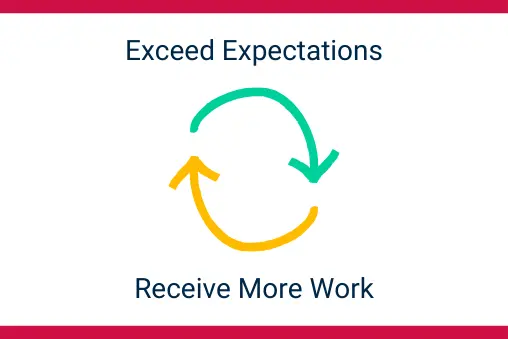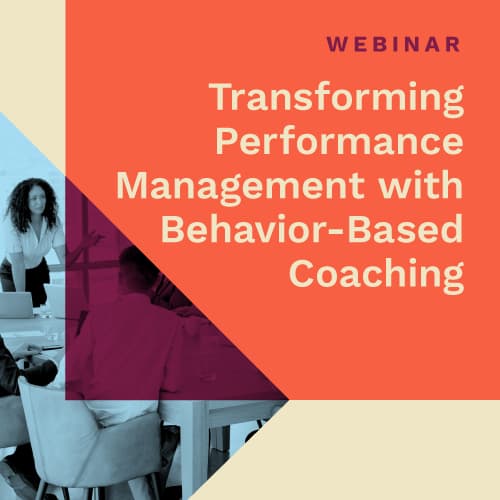Are you actively engaging your organization's high-potentials, or are you only passively involved in their development? Leading organizations play an active role in their employee development and engagement plans. What impact does engagement really have on your organization, though? After all, it takes time and resources to be able to do it effectively. The short answer is that if your employees aren't engaged, you're either not getting the best out of them, or they're going to find some where else to work. Here are three ways you can ensure that you are keeping your company’s future leaders engaged.
1. Uncover Personal Purpose
One of the best ways to create engagement among your workforce is to ensure your employees feel connected to the work they do. Feeling a sense of purpose—when the work you do creating a positive impact beyond the immediate task at hand—will increase an employee's investment in their role. When people feel important and are invested in their work, the resulting sense of purpose creates stronger engagement for the individual within the organization.
Something important to note is that your employees may not always enjoy every task they do—that's just the reality of work. However, always being able to see and feel connected to the bigger picture can create long-term engagement and in their job, even when a short-term task feels less appealing. For example, you may not always want to go to the gym, but if you are invested in healthy living and see the importance of taking care of your body, this greater purpose will help fuel your short-term motivation.
Create purpose and meaning for your employees by:
- Including them in discussions on mission, vision, and values for either the company as a whole or their immediate team or department.
- Explaining how their job function helps other teams and departments internally as well as how it benefits stakeholders and customers externally.
- Having real conversations about what matters to them and connecting their values and passions to their work.
Create stronger engagement over the long-run by fostering a sense of meaning and purpose for your workforce.
2. Be Proactive About Burnout
To put it simply, it's hard to be engaged if you're burnt out! When an individual has exhausted their physical and/or emotional reserves, there is no way they're going to be engaged in their work. As a matter of fact, they are going to feel quite the opposite.
It's important to note that while everyone is susceptible to burnout, everyone's triggers for burnout will vary depending on their personality. What stresses you out, why you feel frustrated, and what you perceive as a lack of support will be impacted by your own personality and perceptions. Because every individual is going to react differently to workplace pressure, it is crucial to know in advance what environments and situations will likely cause stress. By being proactive about understanding how to mitigate burnout for your employees, you will be able to keep engagement and productivity higher over the long run.
In addition, high-potentials and high-performers can face an increased risk of burnout because they are likely going to be given extra work due to the quality and quantity of work they produce. A high-performer can get into a vicious cycle of exceeding expectations, then being given more work, doing a good job, and being "rewarded," again with more work. One way to turn this from a vicious cycle into a virtuous cycle is by providing the high-performer with praise, rewards, and support along the way. Depending on the environment and support, a heavier workload will either be seen as a reward or as punishment.

Instead of rewarding your high-potentials with more work, make sure to express extra appreciation for them, or provide them with unique opportunities for on-the-job learning (which happens to be the next tip to increase engagement). Never forget that when employees are overworked and pressured without having adequate support, it will only be a matter of time until they burn out.
3. Provide Special Learning Opportunities
It's important to give your employees more opportunities, not just more work! Enrolling your employees in rotational job programs, talent development programs, or having them lead special projects are three examples of providing development opportunities for on-the-job learning and development. Allowing your high-potentials to try different types of roles, lead a project, or give a presentation gives them the chance to learn something new and develop additional skills through new experiences.
These types of learning environments and growth opportunities are very attractive and important to Millennial retention. Because Millennials typically have big career aspirations, it is vital for them to feel that they are actively working towards these goals. For example, in the 2016 Deloitte Millennial Survey, it was revealed that Millennials believe businesses are not doing enough to bridge the gap to ensure a new generation of business leaders is created. Check out these other stats below:
- 69% of Millennials aspire to be leaders in the next five years and 60% want training to develop these skills
- 71% of Millennials who are likely to leave an organization in two years are dissatisfied with how their leadership skills are being developed (The 2016 Deloitte Millennial Survey)
- 94% of employees would stay at a company longer if it invested in their career development (LinkedIn 2018 Workplace Learning Report)
At the end of the day, your Millennials, high-potentials, and truly every employee at your company want to feel valued. Feeling valued might look a little different for each person and personality, but showing you care and investing in someone's future is bound to make everyone feel more engaged than not.
Engage Your High-Potentials with Birkman
To ensure future success, organizations need to engage high-potentials through purposeful work, appreciation, and professional development opportunities. Birkman’s Self-Leadership talent development program provides individual contributors with the opportunity to develop the foundational skills needed to lead others in the future. This program will teach individual contributors self-awareness and self-management skills to better understand their motivations and ways to stay engaged in the workplace. Let's connect.

